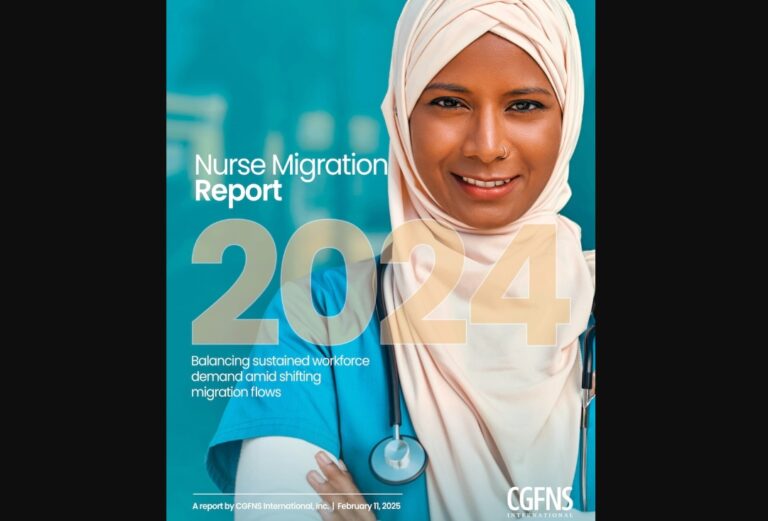Nurse migration into the United States has continued at a strong pace in 2024, with healthcare systems increasingly reliant on foreign-trained nurses to alleviate staffing shortages. According to the latest report from CGFNS International, a non-profit organisation that verifies healthcare professionals’ credentials for immigration purposes, the number of applications for its VisaScreen® service reached 24,733 in fiscal year 2024.
This marks a 4.6% decrease from the previous year, but the numbers remain significantly higher than before the pandemic, with the 2024 figures nearly double the level of 2018. Despite the overall decrease, the report highlights that the demand for foreign-educated nurses remains robust, with the US continuing to be a major destination for healthcare professionals.
However, CGFNS has warned that the current high levels of nurse migration may not be sustainable. The report cites ongoing visa retrogression, the cap on employment-based green cards for nurses, and new immigration policies from the Trump Administration as key factors that could affect future migration trends. These issues are expected to further complicate visa availability and processing times for foreign-trained nurses.
While the distribution of applicants spans over 100 countries, 92% of the nurses applying for VisaScreen® certification came from just ten countries. The Philippines remains the largest source of foreign nurses, accounting for over half (51%) of all VS certificates issued, though this figure has slightly dropped from 60% in 2023. Other significant contributors include Canada (8%) and Kenya (6.5%), with countries such as Nigeria and Ghana showing notable increases in their share of applicants.
The report also reveals that most nurses seeking to migrate to the US are applying for permanent green cards through EB-3 visas, which account for 76% of VS certificates issued. Other visa categories, such as the TN (12%) and H1-B (11%) visas, also remain relevant, though they are far less common.
Dr. Peter Preziosi, President and CEO of CGFNS, commented on the findings, emphasising the critical role that immigrant nurses play in maintaining the staffing levels of US healthcare systems. He warned that any disruption to this pipeline could have serious consequences, leading to exacerbated workforce shortages, increased workloads for existing nurses, and greater burnout.
The global context of nurse migration has also come under scrutiny. The CGFNS report highlights that many source countries are struggling to retain their domestic nursing workforces. In Africa, countries like Zimbabwe and Ghana have temporarily halted the release of migration certificates, while Nigeria has introduced service requirements for nurses before they are allowed to leave the country. Meanwhile, Namibia has taken steps to incentivise nurses to stay by offering attractive benefits.
With demand for skilled healthcare workers soaring worldwide, the report calls for increased international collaboration to address the complex challenges of nurse migration, ensuring that both source and destination countries can meet the needs of their healthcare systems while protecting the wellbeing of the workforce.




